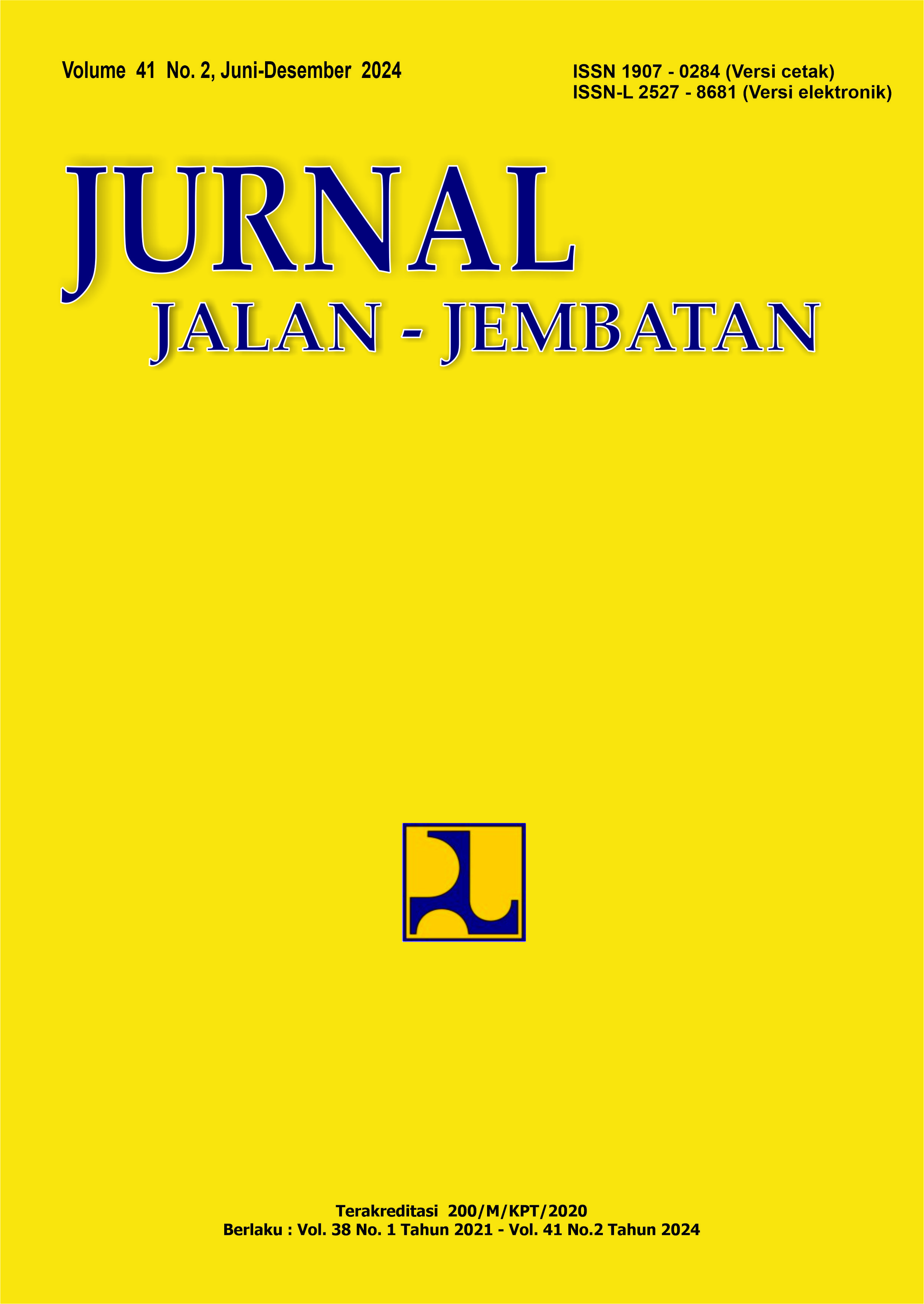THE IMPACT OF UTILIZING SOLID NATURAL RUBBER ASPHALT IN LASTON AC-WC ON EXTREME WEATHER CONDITIONS
Main Article Content
Abstract
The factory has produced solid natural rubber asphalt (AKAP PG 76) and has received support for its implementation by the government. The application of materials in road works at the Directorate General of Highways refers to the Special Specification for Solid Natural Rubber Asphalt (SKh-2.M.04). However, the use of AKAP PG-76 is still limited or only used in national road projects. One of the contributing factors is its relatively high price. This study will evaluate the comparison of price and quality produced. This study aims to compare the characteristics of AC-WC asphalt concrete mixtures using PEN 60/70 asphalt and AKAP PG-76 asphalt. Before the Marshall test, samples with five variations of asphalt content were soaked at 60 oC and 80 oC to achieve optimal asphalt content. The advantages and resistance of asphalt pavement to extreme weather can be seen from the residual strength index. The residual strength index was obtained from the Marshall test comparison of samples with optimal asphalt content soaked for 30 minutes and 24 hours at temperatures of 60 oC and 80 oC. This study found that the asphalt concrete mixture using solid natural rubber (AKAP PG 76) and PEN 60/70 asphalt showed good resistance to extreme weather conditions. However, AKAP PG 76 is better because it has higher Marshall stability and can withstand scorching weather.
Article Details

This work is licensed under a Creative Commons Attribution-NonCommercial-ShareAlike 4.0 International License.
Authors who publish in this journal agree to the following terms:
-
Authors retain copyright and grant the journal the right of first publication with the work simultaneously licensed under a Creative Commons Attribution License, which allows others to share the work with acknowledgment of the work's authorship and initial publication in this journal.
-
Authors may enter into additional contractual arrangements for the non-exclusive distribution of the journal's published version of the work (e.g., post it to an institutional repository or publish it in a book), with acknowledgment of its initial publication in this journal.
-
Authors are permitted and encouraged to post their work online (e.g., in institutional repositories or on their website) as it can lead to productive exchanges, as well as earlier and greater citation of the published work.
Each submitted manuscript must be accompanied by a "Manuscript Originality Statement" and a "Copyright Transfer Statement".

